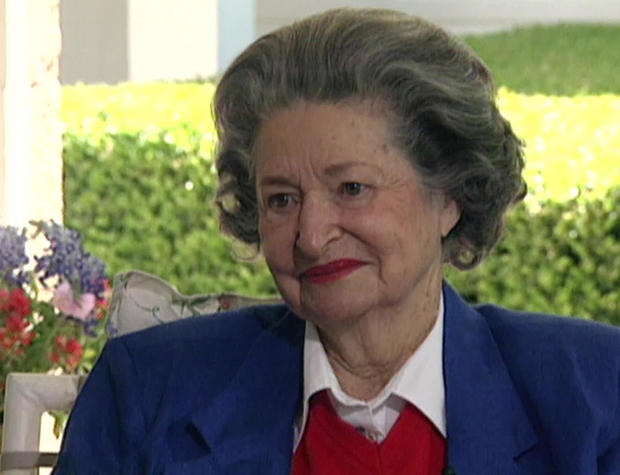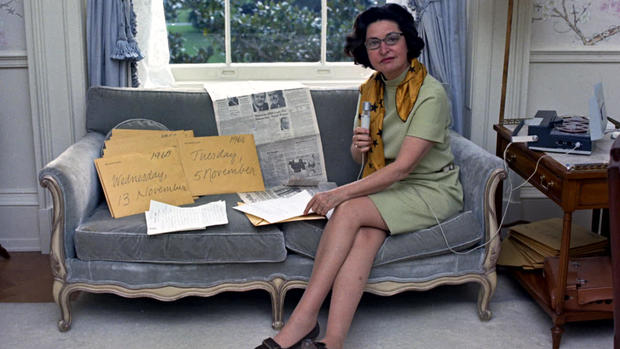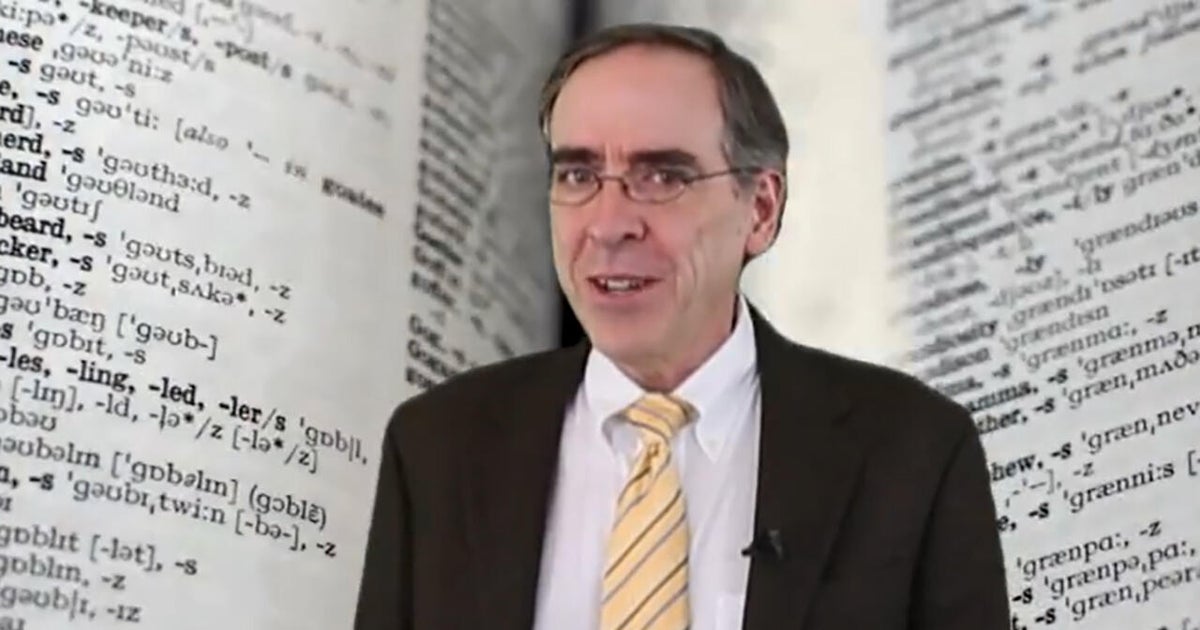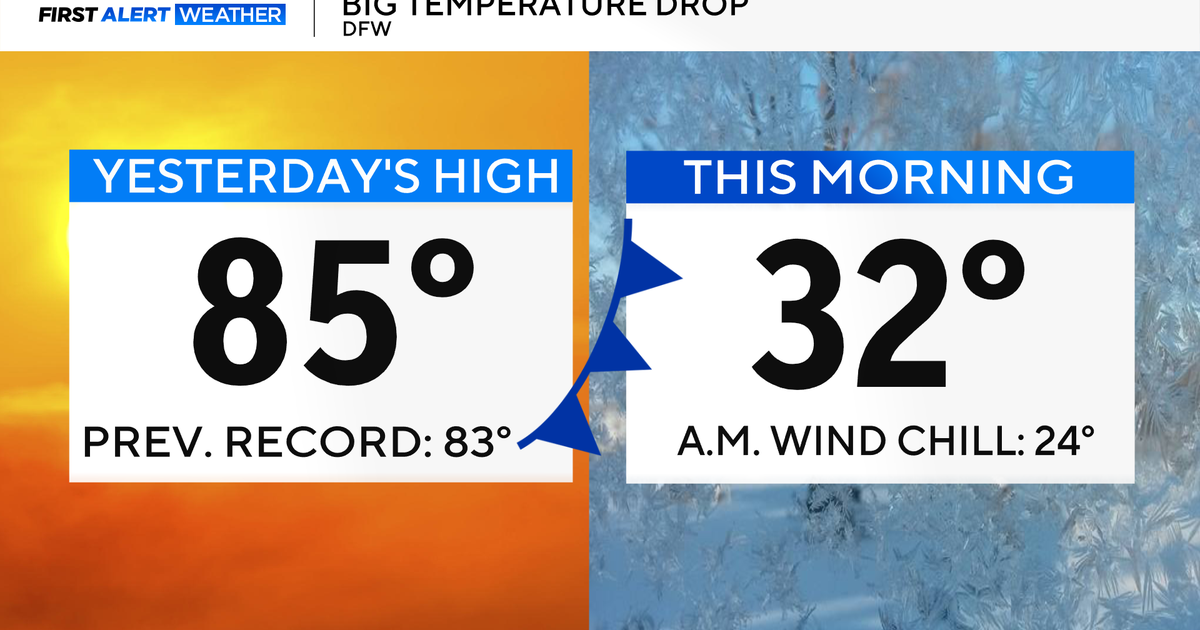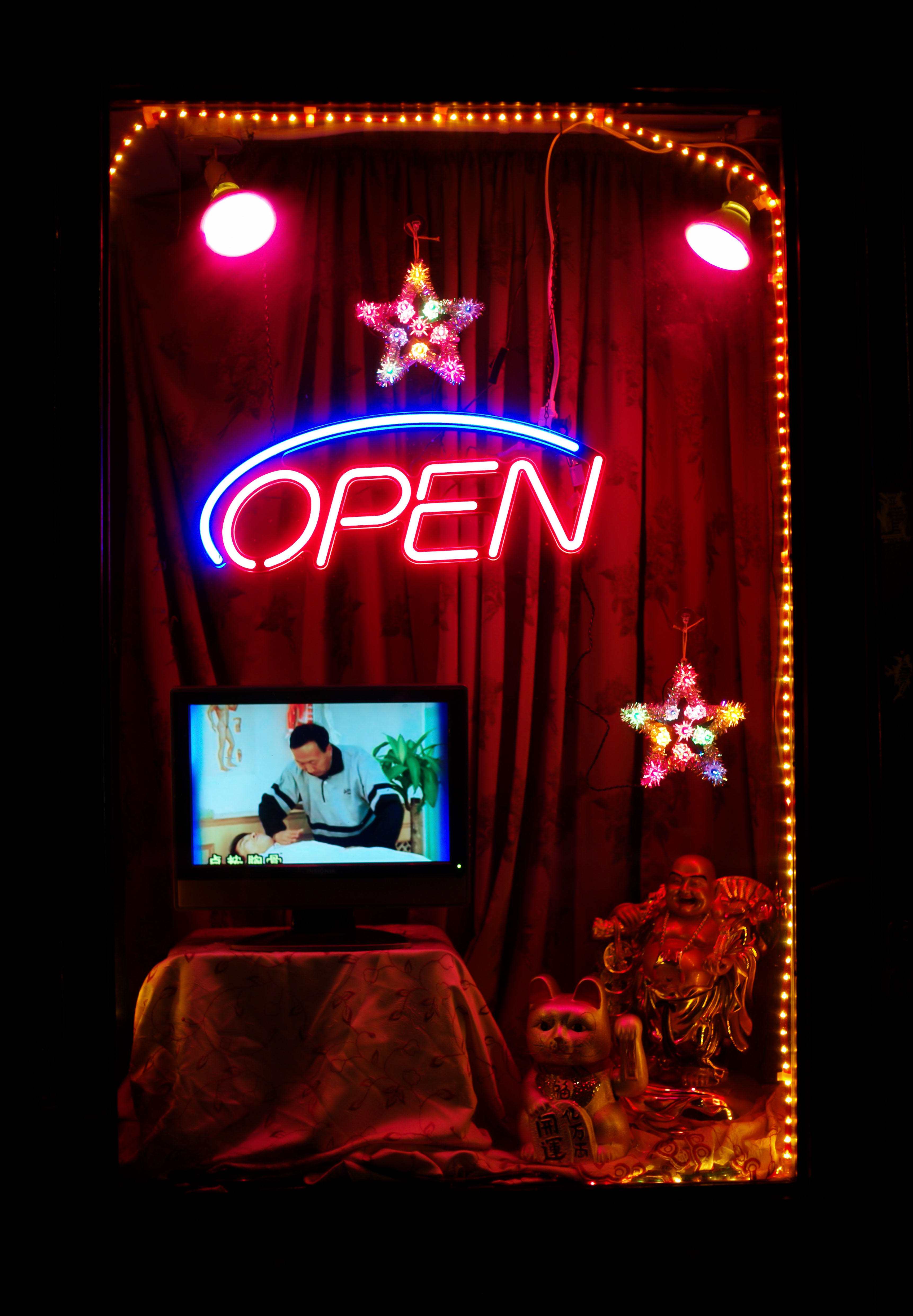Lady Bird Johnson, first lady and diarist
In 1993 Lady Bird Johnson, widow of President Lyndon Baines Johnson, welcomed "Sunday Morning"'s Charles Kuralt to the LBJ Ranch in Stonewall, Texas, where they talked about the former first lady's legacy.
"When you come right down to it," Kuralt asked, "it's a good deal of trouble to plant wildflowers in great abundance – what good do they do?"
"Just joy," she replied, "and joy is a component of life, or should be."
But Mrs. Johnson's famous commitment to "beautification" was about much more than planting wildflowers along highways. A life-long environmentalist, she believed all Americans needed access to nature.
"That was going to be her way to pay her rent for the space she took up on the planet,' said her granddaughter, Lucinda Robb.
Correspondent Mo Rocca asked, "And this wasn't just an avocation, it wasn't sort of, 'Oh, I need a cause, let me pick this'?"
"No, it's something that literally started when she was just a child," Robb said. "Her mother died when she was five, and so she spent a lot of time in nature."
Lady Bird told Kuralt, "Nature was my friend, and sustenance, and teacher."
She was born Claudia Alta Taylor in Karnack, Texas. Her nursemaid nicknamed her Lady Bird.
At the University of Texas she studied journalism and history, which may explain her other legacy, the vast and largely unknown audio diary she recorded during her husband's turbulent time in office.
"All the leaders of the Congress lined up behind Lyndon as he signed the bill…"
For her new book "Lady Bird Johnson: Hiding in Plain Sight" – and companion podcast -- author Julia Sweig listened to every single minute.
"What we're hearing is her first draft [of history]," Sweig told Rocca. "There are 123 hours of tape. She recorded almost 1,000 days of their presidency."
The diary covers both the consequential ("The House voted final Congressional passage of an historic civil rights bill today"), and the quotidian ("And then I went back to watch 'Gunsmoke,' and the younger folks stayed up to see a movie called 'How to Murder Your Wife'").
Sweig said, "Her emotional IQ was off the charts. Her ability to read a room was maybe even better than Lyndon Johnson's.
As for Lady Bird's voice? Rocca said, "I mean, her accent, her vowels. I just love the way she talks."
"Well, what is most important about the way Mother talks is that she talks in real sentences,' said daughter Lynda Bird Johnson Robb. "And she very seldom, says 'Uum, uh, uh, uh, well, you know what I mean?'"
Lynda Bird Johnson Robb is Lucinda's mother, and the elder of Lyndon and Lady Jird Johnson's two daughters.
Of her mother, Lynda Bird said, "She was very, very both disciplined with her language, but very loving. Words were kisses from her."
"This morning I woke up to a white world. Snow falling outside of our bedroom window, so thick."
But the very first diary entry describes the tragic event that would thrust the Johnsons into the White House: the assassination of President John F. Kennedy.
"Mrs. Kennedy's dress was stained with blood. One leg was almost entirely covered with it. And her right glove was caked – that immaculate woman – it was caked with blood, her husband's blood."
Lady Bird was recording history as she was making it.
Rocca asked, "Did she even have a chance to mourn?"
"No, she did not have a chance to mourn," Lynda Bird said. "I don't know if we ever talked about that. It was … the assassination was so, just talking about makes me cry."
In May 1964 President Johnson, unsure if he should run the following November, turned to his most important political advisor.
Sweig said, "LBJ asked Lady Bird to write out the pros and cons for him of running or not running."
In a seven-page handwritten memo, she made her case: "'On balance, you should run and you'll win,'" Sweig recounted. "And here's the kicker: she writes, 'And then in February or March of 1968, you can announce that you will not run again for the presidency.' And that is precisely what he did."
"She had it all mapped out?" asked Rocca.
"The arc of his presidency."
The five years that the Johnsons spent in the White House were eventful ones. Sisters Luci and Lynda were still young women at the time.
Rocca asked Lynda Bird, "Let's get down to brass tacks: In 1966, you dated George Hamilton. What was that like?"
"Well, it was wonderful," she replied. "I always felt that I wasn't very pretty, and meanwhile Luci was dancing the Watusi and Luci was doing things that were much more fun, and I envied her. And I was jealous. Well, going out with George Hamilton … (sigh) … well, you know, that was really special. Because he made me feel pretty. And I probably shouldn't say this about my own children, but I'm going to: one of my children was not as interested in how she looked. And my mother once said, 'We need a George Hamilton for her!' And we laughed!"
Both sisters married men who would serve in Vietnam, a conflict which overshadowed Johnson's achievements in civil rights and Lady Bird's own cause. Sweig said, "She was campaigning for environmentalism, but drowned out by anti-war protesters."
After leaving the White House in 1969, Lady Bird Johnson spent much of her remaining 38 years with her growing family, inspiring them, Lucinda Robb said, in her steady, self-assured way: "She was always able to get things to happen without calling attention to herself. She very much let you think it was your own idea to do whatever it was. And she would plant these seeds. She would say: 'What a wonderful idea! I just think that's marvelous that you did that!'"
READ AN EXCERPT: "Lady Bird Johnson: Hiding in Plain Sight"
Listen to an excerpt from the audiobook of Julia Sweig's "Lady Bird Johnson: Hiding in Plain Sight," narrated by Kirsten Potter:
For more info:
- "Lady Bird Johnson: Hiding in Plain Sight" by Julia Sweig (Random House), in Hardcover, eBook and Audio formats, available via Amazon and Indiebound
- juliasweig.com
- "In Plain Sight: Lady Bird Johnson" (podcast)
- Lady Bird Johnson (LBJ Presidential Library)
- Lady Bird Johnson Wildflower Center, Austin, Texas
Story produced by Jay Kernis. Editor: Joseph Frandino.
More from Mo Rocca on presidential history:
